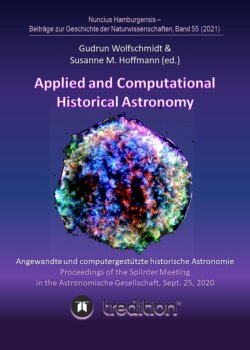Читать книгу Applied and Computational Historical Astronomy. Angewandte und computergestützte historische Astronomie. - Gudrun Wolfschmidt - Страница 10
На сайте Литреса книга снята с продажи.
ОглавлениеFigure 4.1:
Data-Mining and -Processing
(Pixabay)
(Semi-)Manual Data-Mining and -Processing
Karsten Markus-Schnabel (Berlin)
Abstract
The amount of data, becoming available worldwide through the internet, is increasing rapidly. As this applies to historical data, too, this will – in theory - lead to the collection of new knowledge in the history of astronomy. However, many difficulties arise, as –ideally – all available data related to the researchers field of interest should lie at hand, before she or he can formulate his or her results. Of course, expecting this to happen is as unrealistic now, as it was in the times before the internet arrived. Nevertheless, a researcher tends to collect as much data as possible to be able to get to a seemingly complete conclusion. Thus, every researcher will do what the author would like to call “data-mining”, i. e. the search in the worldwide network (and elsewhere) for all kind of data, and subsequently, the processing of this data, to be able to do some sort of analysis to gain more information from this. Since the available amount of time for professionally (paid) researchers usually is very limited, as is the number of paid researchers in the field of history of astronomy in general, the activities of data-mining and -processing and even the analysis of the acquired data, are well suited activities for (groups of) amateur researchers, students and alike, who – similar to the field of obtaining and analysing vast amounts of astronomical data – can help science and scientists with their investment of time and knowledge. This kind of research very often can not be completely automatised and the already established semi-automatic processes often require regular adjustments. Therefore, this work can be quite tedious and time-consuming. In this contribution, the author briefly describes a range of current and past research-projects, to allow for interested persons to immediately begin doing research on their own, thus helping to gain knowledge and to further historical research.
Figure 4.2:
An example of using Google Maps to collect historic locations. In this map, blue symbols are used to mark astronomy-related sites in Cape Town, South Africa.
(© AfriGIS (Pty) Ltd. and Google LLC).
Zusammenfassung: (Semi-)Manuelles Data-Mining und Daten-Verarbeitung
Die Menge der Daten, die durch das Internet weltweit verfügbar werden, nimmt rasant zu. Da dies auch für historische Daten gilt, führt dies – theoretisch – zur Gewinnung neuer Erkenntnisse in der Geschichte der Astronomie. Allerdings ergeben sich viele Schwierigkeiten, da – idealerweise – alle verfügbaren Daten zum Interessengebiet des Forschers vorliegen sollten, bevor er seine Ergebnisse formulieren kann. Dies zu erwarten, ist natürlich heute genauso unrealistisch wie in Zeiten vor dem Aufkommen des Internets. Dennoch neigt ein Forscher dazu, so viele Daten wie möglich zu sammeln, um zu einer scheinbar vollständigen Schlussfolgerung zu gelangen. Daher wird jeder Forscher das, was der Autor als „Data-Mining“ bezeichnen möchte, d. h. die Suche im weltweiten Netz (und anderswo) nach allen Arten von Daten, und anschließend die Verarbeitung dieser Daten, um eine Art Analyse zu machen, also um daraus weitere Informationen zu gewinnen. Da die verfügbare Zeit für professionelle (bezahlte) Forscher in der Regel sehr begrenzt ist, ebenso wie die Anzahl der bezahlten Forscher auf dem Gebiet der Geschichte der Astronomie im Allgemeinen sehr begrenzt ist, sind die Aktivitäten des Data-Mining und der Daten-Verarbeitung und sogar die Analyse der gewonnenen Daten, sind gut geeignete Aktivitäten für (Gruppen von) Amateurforscher(n), Studente(n) und ähnliche(n), die – ähnlich wie im Bereich der Beschaffung und Analyse großer astronomischer Datenmengen – der Wissenschaft und den Wissenschaftlern mit ihrem Zeit- und Wissenseinsatz helfen können. Diese Art der Forschung lässt sich oft nicht vollständig automatisieren und die bereits etablierten halbautomatischen Prozesse erfordern oft regelmäßige Anpassungen. Daher kann diese Arbeit recht mühsam und zeitaufwendig sein. In diesem Beitrag beschreibt der Autor kurz eine eine Reihe von aktuellen und abgeschlossenen Forschungsprojekten, um Interessierten die Möglichkeit zu geben, sofort selbst zu recherchieren und damit zum Erkenntnisgewinn und zur historischen Forschung beizutragen.
